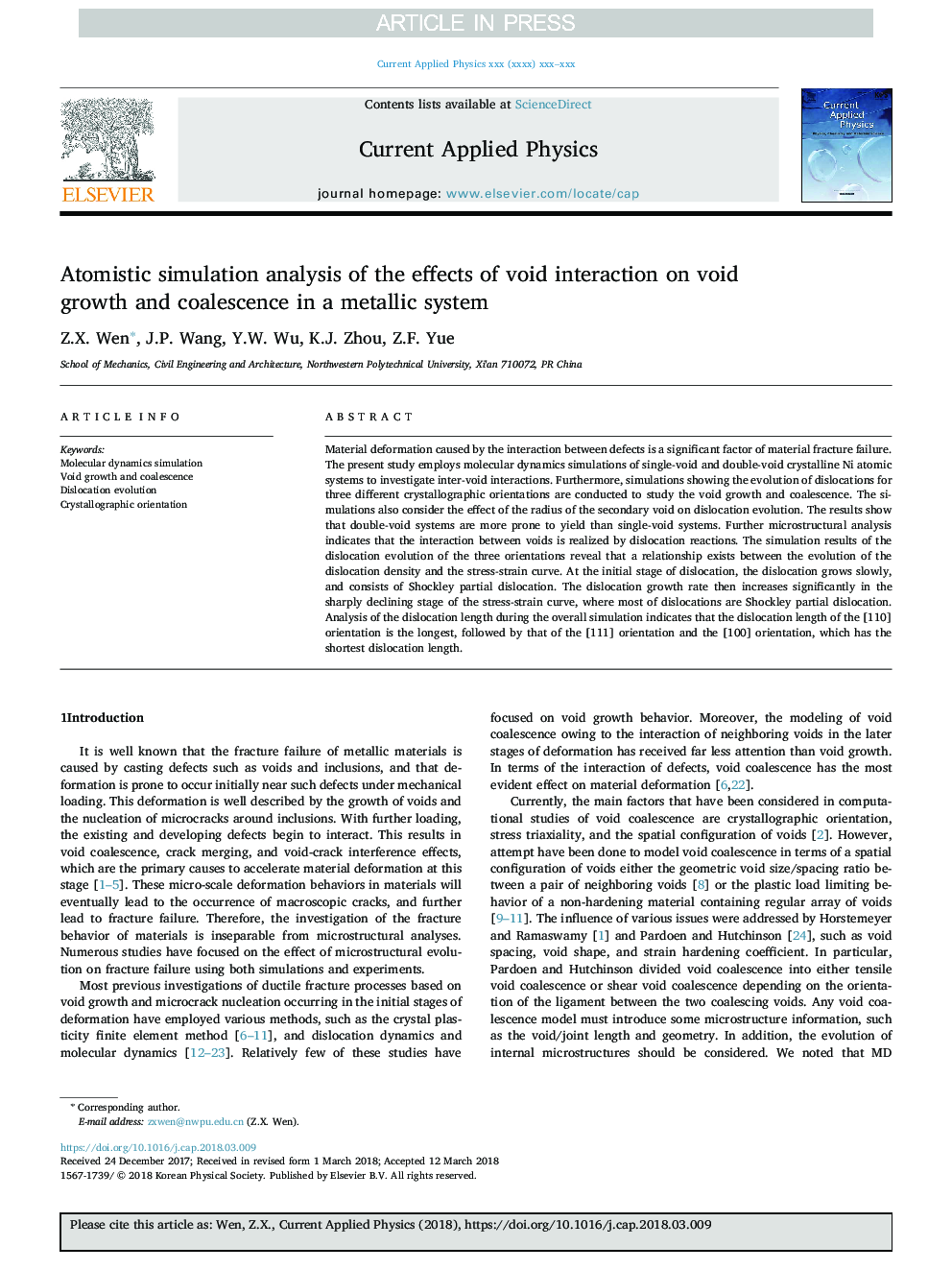| کد مقاله | کد نشریه | سال انتشار | مقاله انگلیسی | نسخه تمام متن |
|---|---|---|---|---|
| 8147810 | 1524153 | 2018 | 8 صفحه PDF | دانلود رایگان |
عنوان انگلیسی مقاله ISI
Atomistic simulation analysis of the effects of void interaction on void growth and coalescence in a metallic system
ترجمه فارسی عنوان
تجزیه و تحلیل شبیه سازی اتومیستی اثر تعامل ناپیوسته بر رشد و تکثیر در یک سیستم فلزی
دانلود مقاله + سفارش ترجمه
دانلود مقاله ISI انگلیسی
رایگان برای ایرانیان
کلمات کلیدی
شبیه سازی دینامیک مولکولی، رشد و تکثیر ناپایدار، تکامل جابجایی، جهت گیری کریستالوگرافی،
موضوعات مرتبط
مهندسی و علوم پایه
فیزیک و نجوم
فیزیک ماده چگال
چکیده انگلیسی
Material deformation caused by the interaction between defects is a significant factor of material fracture failure. The present study employs molecular dynamics simulations of single-void and double-void crystalline Ni atomic systems to investigate inter-void interactions. Furthermore, simulations showing the evolution of dislocations for three different crystallographic orientations are conducted to study the void growth and coalescence. The simulations also consider the effect of the radius of the secondary void on dislocation evolution. The results show that double-void systems are more prone to yield than single-void systems. Further microstructural analysis indicates that the interaction between voids is realized by dislocation reactions. The simulation results of the dislocation evolution of the three orientations reveal that a relationship exists between the evolution of the dislocation density and the stress-strain curve. At the initial stage of dislocation, the dislocation grows slowly, and consists of Shockley partial dislocation. The dislocation growth rate then increases significantly in the sharply declining stage of the stress-strain curve, where most of dislocations are Shockley partial dislocation. Analysis of the dislocation length during the overall simulation indicates that the dislocation length of the [110] orientation is the longest, followed by that of the [111] orientation and the [100] orientation, which has the shortest dislocation length.
ناشر
Database: Elsevier - ScienceDirect (ساینس دایرکت)
Journal: Current Applied Physics - Volume 18, Issue 6, June 2018, Pages 744-751
Journal: Current Applied Physics - Volume 18, Issue 6, June 2018, Pages 744-751
نویسندگان
Z.X. Wen, J.P. Wang, Y.W. Wu, K.J. Zhou, Z.F. Yue,
